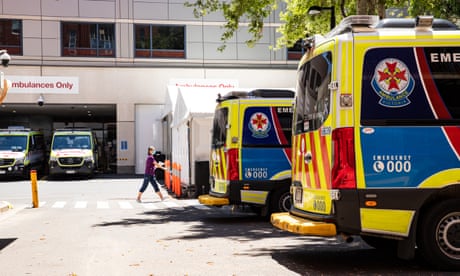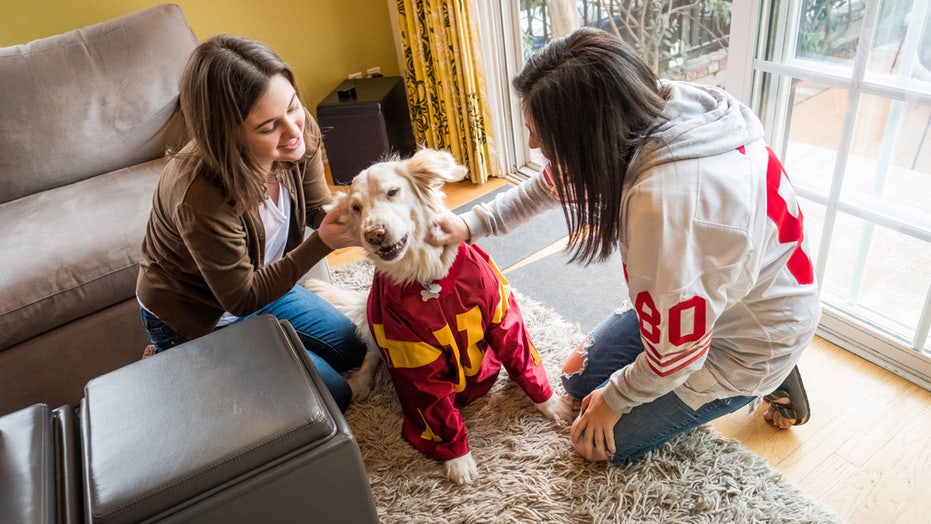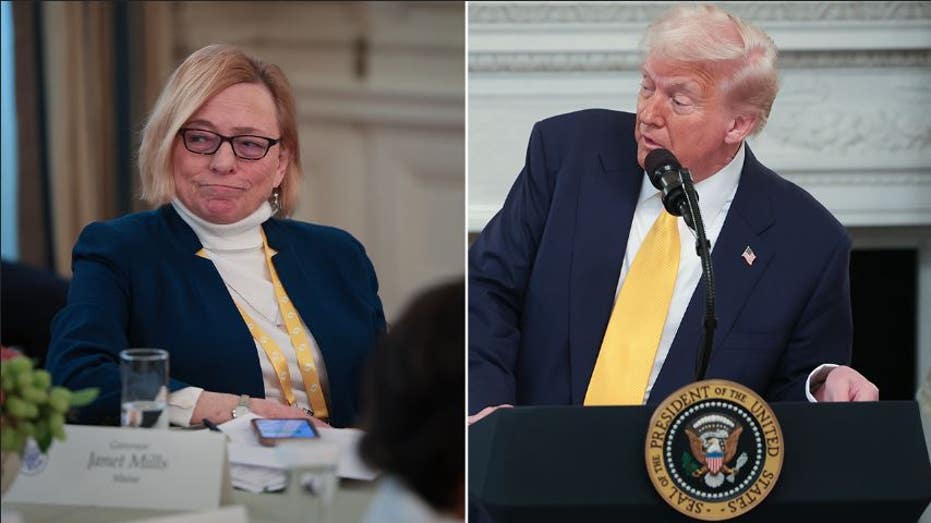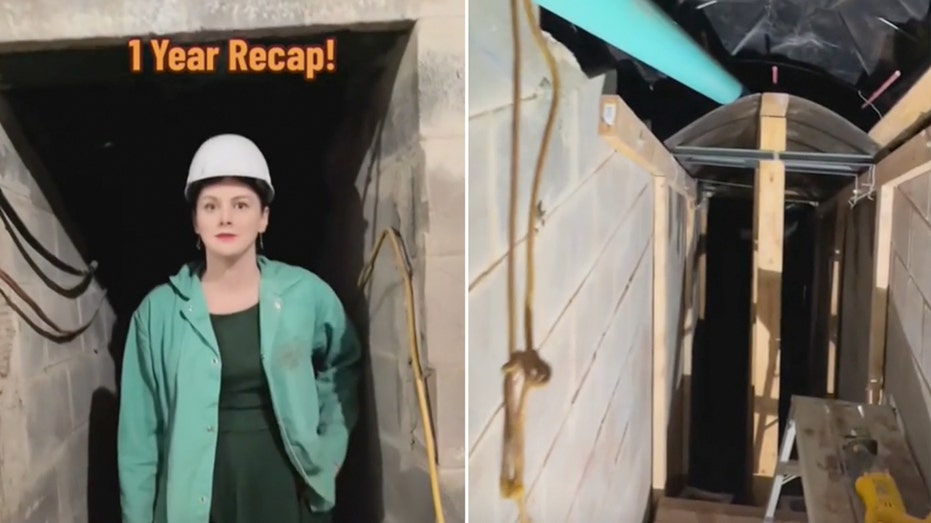- by foxnews
- 15 Mar 2025
‘Health system in distress’: how ambulance ramping became a major problem
‘Health system in distress’: how ambulance ramping became a major problem
- by theguardian
- 07 May 2022
- in news

Images of queues of idle ambulances outside hospitals are everywhere. They are published and shared on social media, broadcast in news coverage and featured in political campaign advertisements.
They are visceral, able to trigger thoughts about what could happen if a person or loved one was stuck outside a hospital, on a stretcher, when emergency care is needed.
Ramping is now providing ammunition to opposition parties - in multiple states - that have struggled to cut through to the public throughout the Covid pandemic.
South Australia's new Labor premier, Peter Malinauskas, won a landslide victory in the state's March election after running a campaign on health and ramping.
In Queensland - where ramping times are the worst in the country - the Liberal National party is pledging to improve triaging when ambulances arrive at hospitals and collect real-time data on the system if it wins power.
Dr Rob Manwaring, a public policy and politics expert at Flinders University, says ramping is an emotive issue that resonates with voters. It also allows political parties to leverage the power of ambulance unions.
"It can be quite effective," Manwaring tells Guardian Australia. "Because in any given weekend, it'd be easy for the media to find a case of somebody who's waited a very long time to receive medical attention within a certain time limit and there have been quite extreme cases.
"It's harder to visually represent, for example, delays in-kind of cancer treatments."
While the politicisation of the issue has brought it into the public consciousness, it can also downplay the structural problems that cause ramping and the subsequent policy problems.
In simple terms, "ramping" is the delays experienced by ambulances at hospitals which ties up crews, meaning there are fewer ambulances available to respond to other emergencies. It can see paramedics doing the work of emergency departments due to staff shortages.
Queensland ambulance service figures for December show the proportion of ambulance trips that resulted in waits of more than 30 minutes before hospital admission reached 46% in the heavily populated south-east region of the state.
Data for the quarter ending in December 2021 showed 38% of Queensland ambulances waited over 30 minutes to hand patients over to emergency staff. It was a similar situation in Western Australia, where 37.3% of crews waited 30 minutes, and in Victoria, where 33.9% of ambulances waited over 40 minutes for access to hospital beds.
In New South Wales, 16.8% of ambulances wait over 30 minutes due to ramping delays.
While problematic on its own, ramping is symptomatic of deeper issues in the health system. As the chief executive of the Australasian College of Paramedicine, John Bruning, puts it, it is the "end result of a health system in distress."
Ambulance ramping predates Covid - but the pandemic has placed unprecedented demand on healthcare systems.
The Australian College of Emergency Medicine's president, Dr Clare Skinner, says a recent literature review she conducted revealed the first reference to "ramping" in Australian medical journals appeared in 1998.
"Covid has only uncovered the cracks that were already existing in the system, and have been for many years," she says.
Skinner says that at the heart of ramping is "access block" at emergency departments.
This is when people have been admitted to emergency, but then cannot be transferred to another ward because of a lack of beds there. This means new patients are forced to wait inside ambulances or hospital corridors.
She says hospital bed shortages are not always due to physical capacity, and stresses the need to ensure there are adequate nursing stuff and appropriately trained specialists.
Other contributing factors include a lack of nursing care in aged care facilities, deferred care that has build up through Covid, nursing & GP shortages, burnt-out healthcare staff leaving the system and Covid furloughing rules depleting staffing workforces.
Skinner also points to Australia's state-federal divide of the health system, resulting in a lack of coordination between different sectors and the structure and financing of primary care.
Bruning says quick-fix approaches - increasing the number of paramedics, or creating more hospital beds - are not a silver bullet.
The population is growing and ageing, so "that new ward will just fill up unless you deal with the issues of how you transition patients back into their community".
He believes the issue must be fixed by looking holistically at how patients flow in and out of the health system, and at preventive care via GPs or other services.
In the Victorian state budget handed down on Tuesday, the government announced almost $700m in funding to extend the Better at Home program that allows patients to receive rehabilitation treatment at their home.
The secretary of the Victorian Ambulance Union, Danny Hill, is most excited about that program - more than any other part of the budget's $12bn in funding to repair the state's battered health system - given the large volume of recently discharged hospital patients that paramedics deal with.
Hill uses the example of someone who has had back surgery.
"They go home, they're experiencing pain, but it's pointless to call triple zero and go back into an emergency department when someone can come out and actually provide the sort of treatment they might need," he said.
Next on Hill's wishlist is an expansion of the state's secondary triage system - a separate call system staffed by nurses and paramedics for emergency systems to reduce the burden on the system.
In NSW, many health workers, like the rest of the public sector in the state, have wage increases capped at 2.5% - a Covid budgetary measure the union is seeking to scrap.
"We are losing staff at an incredible rate to other states and jurisdictions purely because the conditions and the pay in Queensland, Victoria and South Australia are better," says the Australia Paramedics Association's NSW delegate, Brett Simpson.
"It's an economic argument because NSW is spending hundreds of thousands of dollars training these staff for the benefit of other states."
The union has also called for an extra 1,500 paramedics to ease some of the pressures on the system.
Skinner says a structural reform of primary care in Australia - primarily through the Medicare rebate system to incentivise GPs and reduce shortages - is key.
She says Medicare rebates have failed to keep up with the increased cost of living.
"A far [greater] problem is the people who haven't been able to see a GP regularly with what might have been an easily managed problem. They then have a problem that becomes harder to manage and require hospital care," she says.
- by foxnews
- descember 09, 2016
Neighbors react as viral 'Tunnel Girl' granted permit to continue digging massive bunker under home
"Tunnel Girl" in Herndon, Virginia, "finally" got her tunnel project approved after pausing the project due to a potential violation. Locals and social media users react.
read more


